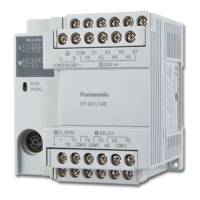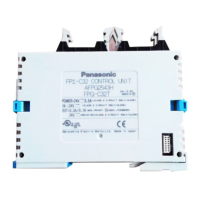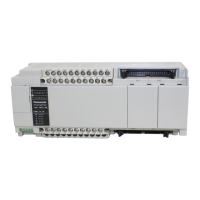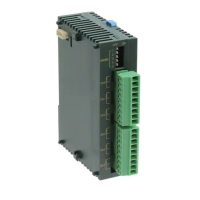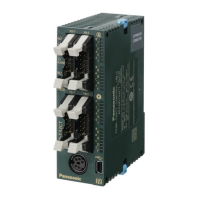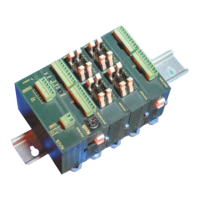Conversion instructions
675
Part III FP Instructions
About the number of ASCII characters (8-bit) per converted unit
When converting 16-bit binary units to hexadecimal ASCII data:
Range: 16#1 to 16#4.
When a range of less than 16#4 is set, the specified number of characters from the lower
bytes are stored. If the original binary unit data cannot be accommodated by a setting less
than 16#4, an error occurs.
When converting 32-bit binary units to hexadecimal ASCII data:
Range: 16#1 to 16#8.
When a range of less than 16#8 is set, the specified number of characters from the lower
bytes are stored. If the original binary data cannot be accommodated by a setting less than
16#8, an error occurs.
When converting binary units to decimal ASCII data:
Range: 16#1 to 16#F.
Source data is treated as signed binary data. If it is a negative number, a minus sign "-" is
added. A space "
" will be stored in the leading blanks if the area specified in d_AsciiData is
larger than the number of ASCII characters per converted unit.
Conversion examples:
Binary data
s1_
Con-
trol
n_Con-
version
Method
Result ASCII data Comment
Data
type
Offs. in
16-bit
word units
Hex. value
D+
3
D+
2
D+
1
D
0 16#5678 16+H 16#204 21 43 65 87INT,
WORD
1 16#1234
Normal
direction.
2 x 4 ASCII
characters.
0 16#5678 16-H 16#204 43 21 87 65INT,
WORD
1 16#1234
Reverse
direction.
2 x 4 ASCII
characters.
0 16#0456 16+H 16#203 XX 13 24 65INT,
WORD
1 16#0123
Normal
direction.
2 x 3 ASCII
characters.
0 16#0456 16-H 16#203 XX 32 16 54INT,
WORD
1 16#0123
Reverse
direction.
2 x 3 ASCII
characters.
DINT,
DWORD
0 16#123456
78
32+H 16#108 21 43 65 87 Normal
direction.
1 x 8 ASCII
characters.
DINT,
DWORD
0 16#123456
78
32-H 16#108 87 65 43 21 Reverse
direction.
1 x 8 ASCII
characters.
DINT,
DWORD
0 16#000123
45
32+H 16#105 XX X1 32 54 Normal
direction.
1 x 5 ASCII
characters.
DINT,
DWORD
0 16#000123
45
32-H 16#105 XX X5 43 21 Reverse
direction.
1 x 5 ASCII
characters.
'X' values do not change.
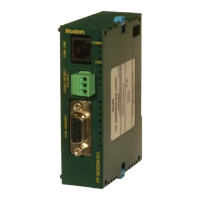
